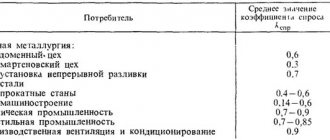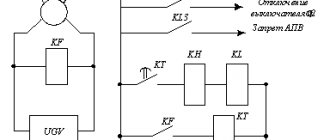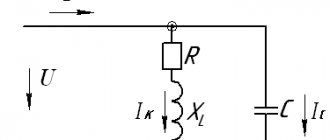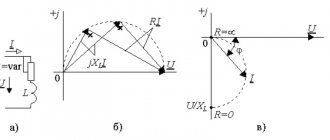What is the social norm for electricity consumption?
Social norms for electricity consumption are the established amount of electricity consumption per citizen. They are formed at the level of regional authorities.
It concerns absolutely all people, regardless of the purpose for which they need electricity.
The state has provided such a standard to achieve certain goals:
- reduce household expenses for electricity;
- increase the responsibility of employees of management companies;
- have the opportunity to receive payment from the population on time in a certain amount.
However, citizens who have metering devices are also faced with paying for electricity according to the standard when the following situations arise:
- no metering station;
- information on the installed device is transmitted late;
- the counter is broken;
- intentional damage to the meter was detected;
- the employee keeping track of energy consumption does not receive the necessary information.
Payment for electricity according to the standard
So, to calculate standards and pay for electric energy, the state uses the following factors:
- the degree of deterioration of the house;
- features of the climate situation in the region;
- the number of people who are registered in the housing;
- whether there is a boiler for hot water;
- size of the settlement;
- the number of rooms in the living space and the volume of area;
- type of stove for cooking.
Take into account: the average monthly electricity consumption rate changes three years after its adoption.
How to calculate the standard electricity consumption
To calculate the payment for electricity, you should use a certain formula:
S = K * N * T,
where S is the amount of funds paid without a counter;
T is the price per 1 kilowatt;
N are regional coefficients;
K is the number of registered citizens in the house.
Provided that the citizen making the payment has powerful equipment in his home and wastes more electricity than established by the standards, then he should overpay, but the tariff will be higher.
It is worth noting that there are additional provisions in the legislation that must be taken into account before determining the contribution amount:
- When a pensioner lives alone in an apartment, in the first year payment is made at a reduced rate, but the next year it is paid according to special social norms.
- If there is a stove in the house, the standard energy consumption per citizen is 43 kW.
- A person living in a village must pay for electricity at a rate of 90 kW.
How much electricity is spent per month
Electric stove, power consumption kW. Cooking took place daily from 1 hour per meal. Breakfast took the least amount of time, up to 30 minutes using just the kettle. Lunch and dinner took one hour to prepare. Over the weekend, the family had guests, and the electric stove worked for 180 minutes. On Sunday, the housewife made preparations for the coming week, so consumption was greater. When cooking, she used 2 burners, which heated to a certain temperature and turned off. This means that 2/3 of the maximum power was used. On average, a stove consumes from 4 to 8 kW. The average rating of this stove was 6 kW. For a week 9 kW, and for a month - 38.5 kW.
- The oven was popular 2 times a week. 1.5-2.0 hours each. Meat and baked goods were being prepared. Let's round the figure to 3 hours, and the average per week comes out to 2.5 kilowatts. 10 kW per month.
- The energy consumption of an electric stove is somewhere next to a small electric kettle. Its average power is equal to 2-2.4 kW. For our family, the kettle plows 8 times a day. In one day he will spend 1000 watts, and in a month 32 kW.
- The refrigerator, it would seem, is the largest appliance and works on a constant basis, but consumes less than the same kettle. So, it’s worth taking into account the brand, power, volume. Modern equipment can consume no more than 20 kW per month. In our case, the figure is 25 kW.
- Dishwasher. Multifunctional device. They heat up the water, it works for 2 hours, 1-2 times a day. Consumption cannot be small, but it still spends less than a kettle and an electric stove per month. Also, they vary in volume, the average number is 9-12 sets. During a cycle, the machine will spend 0.8-09.5 kW, and per month the approximate expenses will be 24-28 kW.
- The coffee machine uses the smallest consumption, operating no more than 20 minutes a day. Their consumption is 7.5 kW per month. With active use, frequent guests, 9-12 kilowatts.
- Microwave power consumption is from 1000 to 2000 W. This results in consumption of 10 kW per month. Provided that it is used for at least 20 minutes every day.
RESULT:
We warn you that all device indicators are approximate, because the data was calculated based on user explanations. This family's kitchen equipment runs at 140-145 kilowatts overall. Do not forget that this is a waste of one kitchen. Electricity also powers a TV, computer, lighting, washing machine, iron, and so on. But, as we said earlier, the average consumption is 300 kilowatts per month.
How to save money?
Actually, there is no exact guide to saving energy. But it’s worth being rational and using devices that provide our comfort in moderation. If the refrigerator must operate on a regular basis, then turning the electric oven on and off and heating food in it is not worth it. Also, you can do without a coffee machine if you are not the greatest coffee connoisseur. There is also a tendency to “forget”, do not forget to turn off the lights when leaving home. Having the lights on is not always safe for apartments in old buildings, plus a lot of power is wasted.
We hope our article helped you calculate which devices you definitely need to use and what you don’t need to buy. Don't forget that electricity consumption is a consumption of the earth's resource. Respect natural values and be economical with your budget.
Add AN to your sources so as not to miss important events - Yandex News
- How much electricity does kitchen appliances consume?
- President of the Patient Defense League Alexander Saversky: the “pandemic” and global total vaccination are a struggle for power
- Sergei Markov: The progress of the Olympic Games shows that the analysts of the American and British intelligence services are completely right
- American scientists have announced a global climate crisis threatening the entire planet, what does this mean?
- Pies in the oven: 12 tips on how to bake correctly
- Russian warships responded to the shooting of Ukrainian boats in the Sea of Azov
- Alexander Saversky: “Covid is not a plague”
Become a member of the CLAN and every Tuesday you will receive the latest issue of “Arguments of the Week” with a discount of more than 70%, along with exclusive materials not included in the newspaper. Get premium access to a library of the most interesting and popular books, as well as an archive of more than 700 published issues for FREE. In addition, you will have the opportunity to benefit from free legal advice from our experts for a whole year.
- Enter your email address, then select any convenient payment method for your annual subscription
- Scan the QR. In the Sberbank Online application that opens, enter the annual subscription cost (490 rubles). Then send the confirmation code by email
Or
How much electricity does an apartment consume on average?
If we talk about the average electricity consumption in an apartment, then without all the extra charges it is approximately the following (kW):
- 1 person – 96;
- 2 people – 146;
- 3 people – 166;
- 4 people – 186;
- 5 people – 206.
Monthly allowance (kW):
- when a private house is dilapidated, the volume of electricity increases by 1.2-1.5 times;
- for a household in a village - plus 90;
- during the heating season, if electricity is used to heat the household - plus 3000;
- if the house has a stove - plus 43;
- if there is an electric water heating device - plus 100.
Comparison of electricity consumption in different countries
Data on electricity consumption per person per year in developed countries are provided by specialists from the Institute for Problems of Natural Monopolies in our country.
| A country | kW | Percent |
| USA | 4587 | 100 |
| Republic of Finland | 4261 | 93 |
| French Republic | 2486 | 54 |
| Kingdom of Great Britain | 1878 | 41 |
| Federal Republic of Germany | 1730 | 38 |
| Russian Federation | 935 | 20 |
From the table we see that in our country consumption is very far from developed countries of the world, this indicates the low energy intensity of the homes of Russian citizens. Monopolies were not formed on their own; they were inherited by the country from the USSR, where a centralized system of energy production and sale was built for many years.
Currently, the average price of electricity supplied to the population in different regions ranges from 2.5 to 4 rubles per 1 kW. Consequently, the average Russian pays approximately 2,570 rubles per year. Many sources note that this price is already approximately 1.2 times higher than in the USA.
Electricity consumption standards per person by region of the Russian Federation
At the legislative level, a standard indicator for electricity consumption has been established in 2021.
Mosenergosbyt, through simple calculations, decided that this standard is equal to 350 kW/h for each person who is registered and lives in the apartment.
It is worth noting that each person can independently determine the personal amount of energy consumption based on their financial capabilities. However, one important condition must be observed - this volume should not greatly underestimate the limit, ideally by no more than 40%.
If we talk about the standards separately by region, then you need to understand that Russia is a large country, and many aspects influence the amount of payment.
Among them:
- type of stove - electric or gas;
- are there special standards established in the region;
- are there devices that consume a decent amount of energy;
- type of area - village or city.
As for the city of Moscow, the single population is eligible for benefits. There are certain standards for them, taking into account the appliances used in housing.
When the house has a gas stove, the payment indicator should be around 50 kW/hour. For other cases, the figure increases to 80 kW/hour.
If a person lives in a rural area, then special conditions apply to him. The standard rate for them is set at 90 kW/hour. When it comes to pensioners, they have reduced tariffs and social standards.
Tariffs and norms
Our state regulates tariffs and increases them depending on existing inflation. Even in this case, the price increase is quite noticeable for the majority of the population. The Moscow Energy Efficiency Center conducted their research. According to their data, the average resident of our country spends 2-3 kW per day. Compare with the USA, it turns out 12.5 kW.
It is clear that our state aims to save energy resources, but is it necessary in a consumer society? The higher the electricity consumption per person, the greater the income of the monopolies, and therefore the state.
The power of any equipment is written in its passport (electricity consumption of household appliances can be viewed here). Of course, you can calculate whether it is really necessary to buy an additional refrigerator or TV. Imagine the families of your friends and acquaintances and remember - how many have a dishwasher or air conditioner in their home? The presence of technology speaks volumes about the standard of living of the country’s citizens; won’t this set us back far in terms of energy rations?
How can you reduce consumption?
To save their money, many try to reduce monthly electricity levels using legal and not entirely legal means.
There are several reasonable rules to reduce consumption:
- Air conditioning - be sure to ensure all doors and windows are closed.
- When purchasing equipment that runs on electricity, consider the amount of electricity used. The most economical option is A.
- Make sure there is no scale in the kettle - if there is scale on the walls of the appliance, the load on it increases, which means energy consumption increases.
- Make a smart home - use energy-saving light bulbs.
- The refrigerator should be placed in a dark place.
If you follow the above rules, you can save up to 35% on electricity consumption, which means you will need to pay less.









